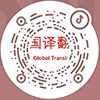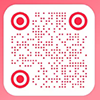Specific Solutions
Why Do Translation Prices Vary So Much Between Companies?|Understanding Pricing in the Language Services Industry
When clients request a translation quote, one of the most common questions is:
“Why do different companies charge such different prices for the same project?”
Some providers may offer extremely low rates, while others quote two or three times more. This price variation doesn’t always mean “the more expensive, the better,” but it does reflect differences in service quality, translator qualifications, workflow, and risk control.
Here’s a professional breakdown of the main factors that affect translation pricing—and how to make informed decisions.
1. Different Types of Translation Have Different Pricing Standards
Translation is not one-size-fits-all. The nature of the content determines complexity and cost:
General content (e.g., emails, blog posts): usually lower cost
Specialized documents (e.g., contracts, technical manuals, financial reports): require industry expertise, cost more
Localization (e.g., websites, apps, games): involves creative rewriting, formatting, and cultural adaptation
Interpretation services (e.g., escort, consecutive, simultaneous): charged hourly or daily, usually higher-priced
Additional services: layout design, certification, native review, rush delivery, and formatting may add to the base rate
2. Translator Qualification and Team Structure Vary
Translation quality is directly tied to the people doing the work:
Are translators full-time professionals or freelancers? Native speakers?
Projects involving certified linguists, subject-matter experts, and native editors will cost more—but deliver better results.Does the company use a multi-step QA process?
A full “T-E-P” cycle (translation–editing–proofreading) ensures consistency and clarity, but is more resource-intensive than basic translation.Are terminology and project tools in place?
Companies that maintain translation memory (TM), termbases, and collaborative platforms typically offer higher-quality, scalable results.
3. Industry Field and Technical Difficulty Impact Cost
Not all texts are created equal. Some require much more expertise, research, or formatting.
| Document Type | Difficulty | Pricing Level |
|---|---|---|
| General marketing copy | ★ | Low |
| Legal contracts | ★★★ | Medium-High |
| Engineering diagrams | ★★★★ | High |
| Medical/financial/patent | ★★★★★ | Very High |
The more specialized the content, the more time and care it takes to translate it properly.
4. Company Type, Reputation, and Risk Management Differ
Registered language service providers: Offer official seals, invoicing, legal compliance, and client protection—often at a higher but more reliable cost
Freelance translators or marketplace vendors: Lower rates, fast turnaround, but less consistent quality and minimal accountability
Enterprise-level LSPs: More expensive, but deliver structured workflows, multilingual capabilities, and strong project support
5. Timeline, Volume, and Value-Added Services Affect the Quote
Is the project urgent or time-sensitive? (e.g., overnight, weekend delivery)
Is it a one-off or a long-term partnership (bulk discounts may apply)?
Does it involve DTP, localization, glossary setup, multilingual formatting, or file engineering?
These variables also contribute to pricing differences across vendors.
Conclusion: Price Differences Reflect Service Models and Risk Control
There is no universal price standard in the translation industry.
What varies behind each quote is the depth of expertise, degree of quality assurance, and level of accountability.
When selecting a translation provider, don’t just compare unit prices. Consider your goals, document sensitivity, and tolerance for risk. Choose a partner that aligns with your standards—not just your budget.
If you’d like to understand how we calculate our quotes or request a custom project assessment, feel free to contact Elite Translation. We’ll be happy to provide a transparent, professional, and tailored solution


















